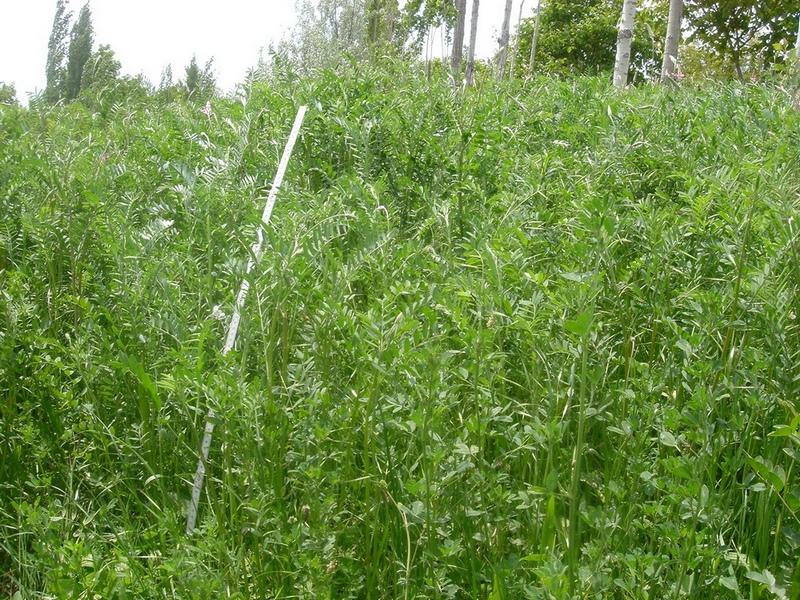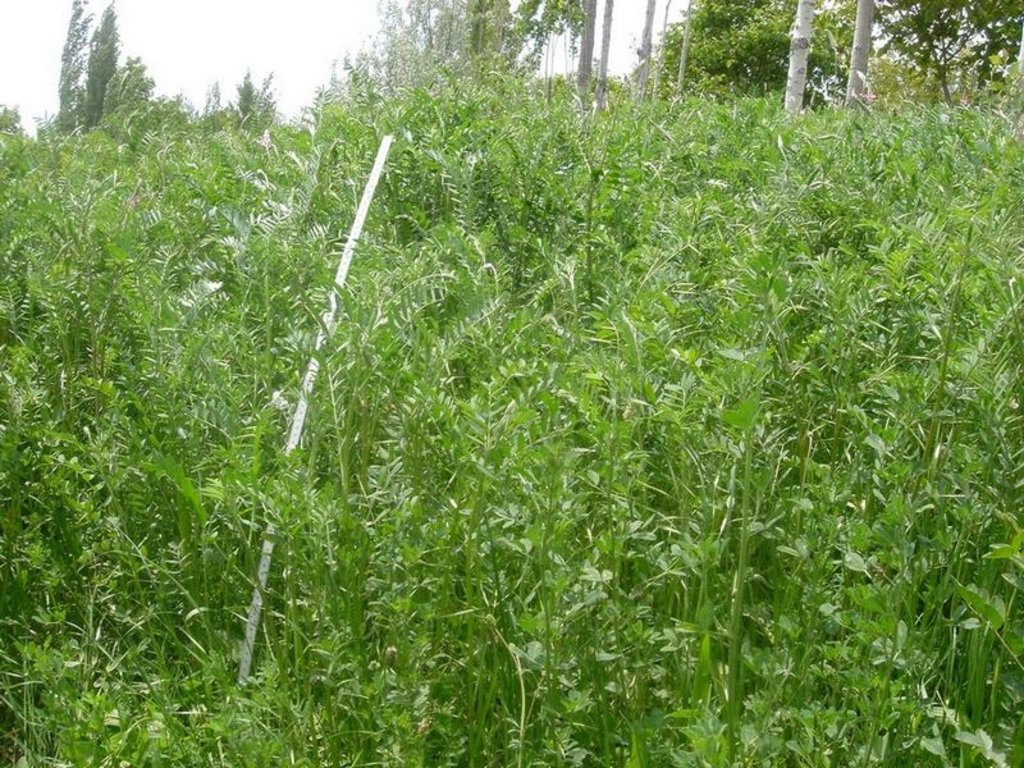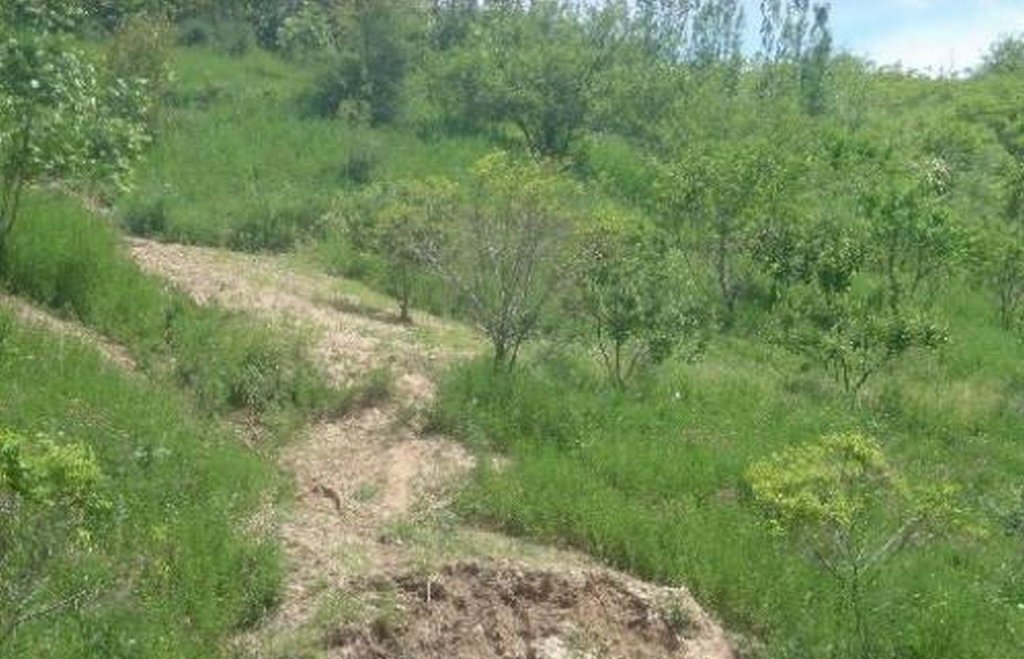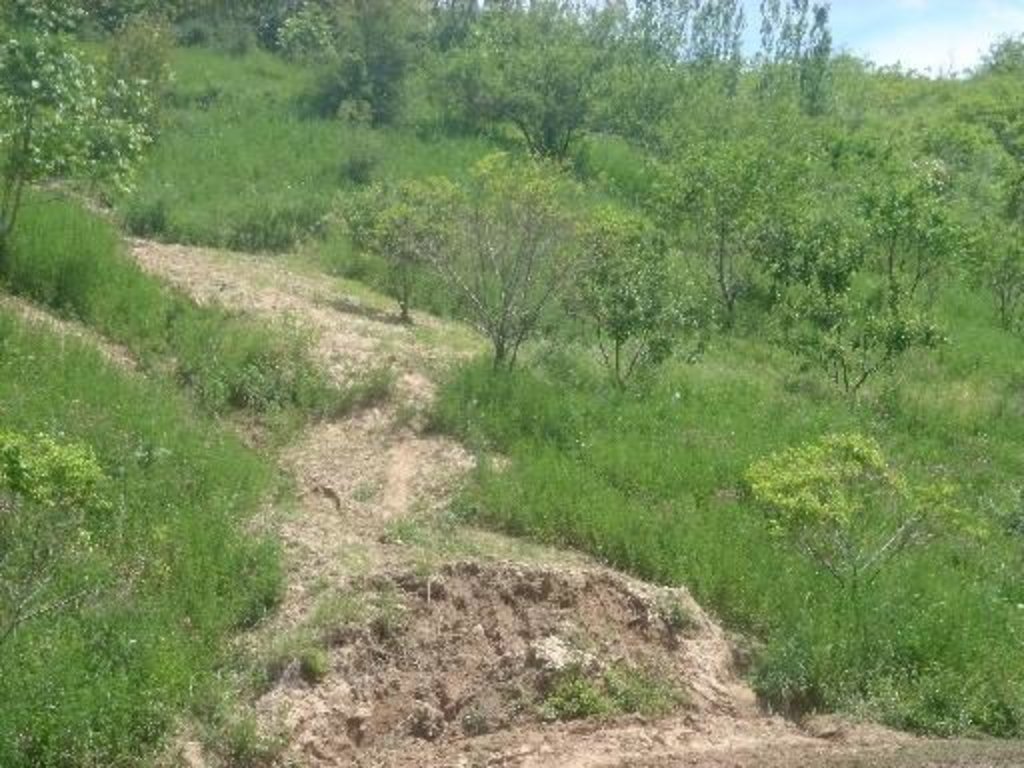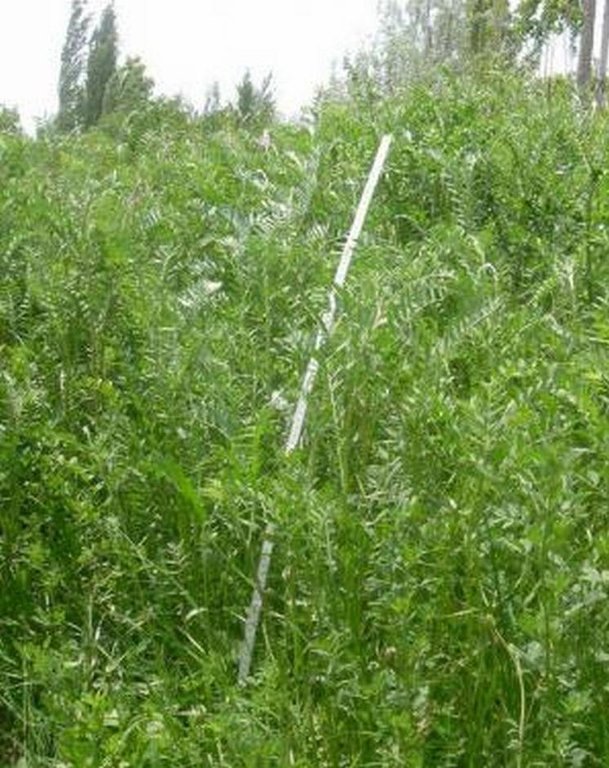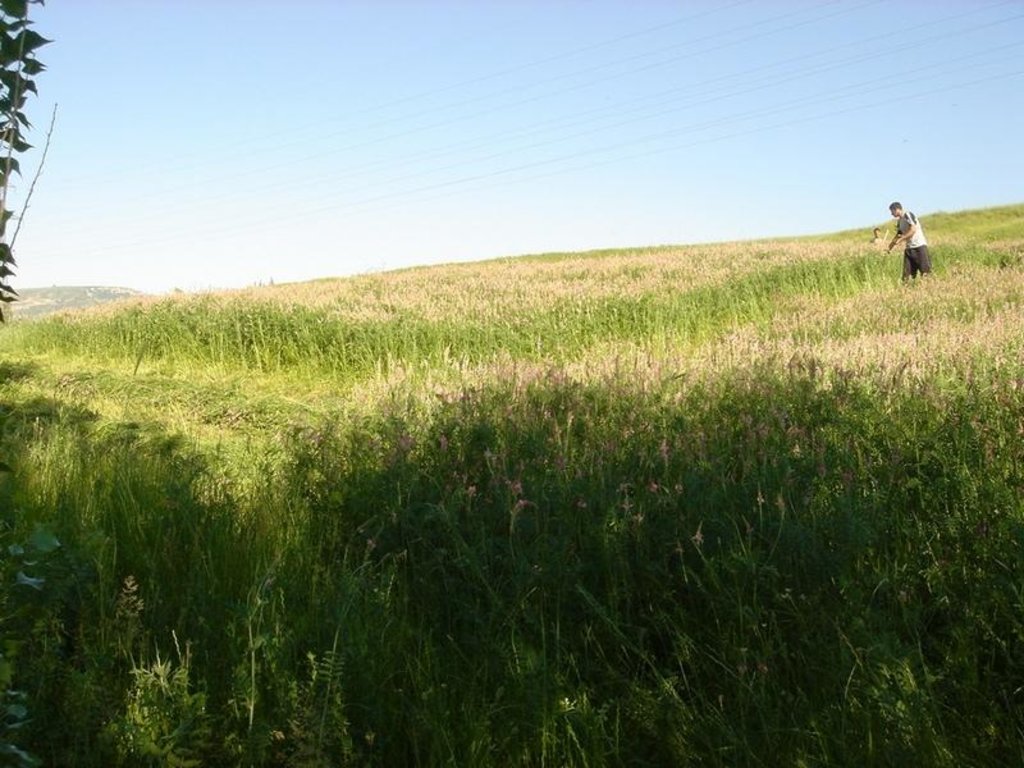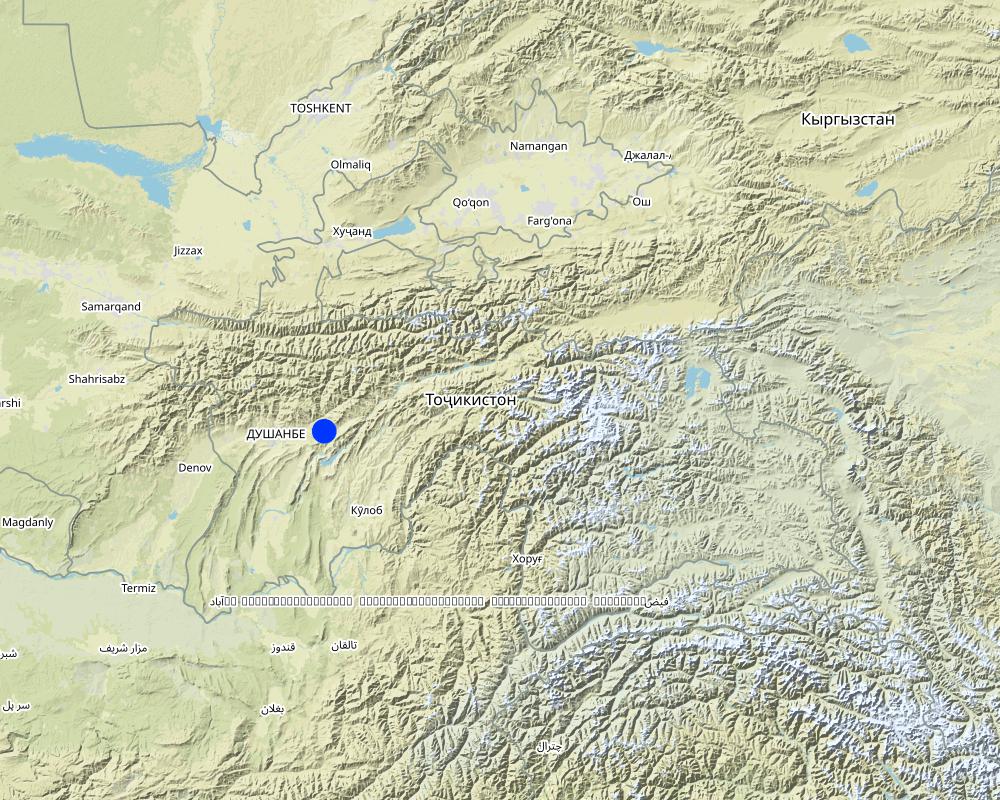Perennial Herbaceous Fodder Plants for Intact Canopy Cover [塔吉克斯坦]
- 创建:
- 更新:
- 编制者: Erik Bühlmann
- 编辑者: –
- 审查者: David Streiff, Alexandra Gavilano, Joana Eichenberger
technologies_1000 - 塔吉克斯坦
- Perennial Herbaceous Fodder Plants for Intact Canopy Cover: Aug. 21, 2019 (inactive)
- Perennial Herbaceous Fodder Plants for Intact Canopy Cover: Nov. 2, 2021 (public)
- Perennial Herbaceous Fodder Plants for Intact Canopy Cover: July 19, 2017 (inactive)
- Perennial Herbaceous Fodder Plants for Intact Canopy Cover: July 17, 2017 (inactive)
- Perennial Herbaceous Fodder Plants for Intact Canopy Cover: March 10, 2017 (inactive)
查看章节
全部展开 全部收起1. 一般信息
1.2 参与该技术评估和文件编制的资源人员和机构的联系方式
SLM专业人员:
有助于对技术进行记录/评估的项目名称(如相关)
Pilot Program for Climate Resilience, Tajikistan (WB / PPCR)有助于对技术进行记录/评估的机构名称(如相关)
CDE Centre for Development and Environment (CDE Centre for Development and Environment) - 瑞士有助于对技术进行记录/评估的机构名称(如相关)
NCCR North-South (NCCR North-South) - 吉尔吉斯斯坦1.3 关于使用通过WOCAT记录的数据的条件
编制者和关键资源人员接受有关使用通过WOCAT记录数据的条件。:
是
2. SLM技术的说明
2.1 技术简介
技术定义:
The cultivation of perennial herbaceous fodder plants to be used to fertilise unproductive cropland, and as permanent crops to be used to increase farm fodder production.
2.2 技术的详细说明
说明:
Perennial herbaceous fodder plants such as alfa-alfa and esparzet are cultivated for fodder production and to fertilise unproductive cropland. Esparzet and alfa-alfa are often grown on steep slopes not suitable for annual cropping and on unproductive cropland as green manure. Alfa-alfa and esparzet can be harvested for 6-10 years without tillage.
Purpose of the Technology: These crops fix nitrogen, so they help fertilise the soil so that farmers can plough or harrow the land after 5-10 years to grow annual crops again.Alfa-alfa and esparzet can be harvested for 6-10 years without tillage (depending on the soil characteristics and inclination).
Establishment / maintenance activities and inputs: As yield from perennial herbaceous fodder plant fields starts declining around 4-6 years after the initial cultivation, farmers make up for declining yields by applying additional seeds. Alfa-alfa and esparzet can be harvested twice a year (3-4 harvests a year if irrigated), which results in a significantly higher annual farm fodder production in comparison to ordinary haymaking fields.
Natural / human environment: Some farmers reported problems in growing esparzet or alfa-alfa on slopes with an inclination of more than 30%. However, various examples have shown that these perennial herbaceous fodder plants can be cultivated on steep slopes of up to 60%. On steep slopes an extra amount of seeds must be applied to offset those lost downslope by washing before germinating. Alfa alfa and esparzet are effective in reducing soil erosion since their cultivation leads to an more intact ground cover throughout the year. Furthermore, not needing to tillage for up to ten years helps conserve the soil resources.
2.3 技术照片
2.5 已应用该技术的、本评估所涵盖的国家/地区/地点
国家:
塔吉克斯坦
区域/州/省:
RRS
有关地点的进一步说明:
Faizabad Rayon
具体说明该技术的分布:
- 均匀地分布在一个区域
如果不知道精确的区域,请注明大致覆盖的区域:
- 1-10 平方千米
Map
×2.7 技术介绍
详细说明该技术是如何引入的:
- 在实验/研究期间
3. SLM技术的分类
3.1 该技术的主要目的
- 减少、预防、恢复土地退化
3.2 应用该技术的当前土地利用类型

农田
- 一年一作
- 多年一作(非木材)
年作 - 具体指明作物:
- 纤维作物 - 亚麻、大麻和其他
- 谷类 - 小麦(春季)
- 饲料作物 - 苜蓿
- 蔬菜 - 其他
- esparzet
每年的生长季节数:
- 1
具体说明:
Longest growing period in days: 210Longest growing period from month to month: Mar - Aug
注释:
Major land use problems (compiler’s opinion): severe soil erosion (gullies and rills) and subsequent fertility decline on the cropland and overgrazed pastures
Major land use problems (land users’ perception): fertility decline, soil erosion and washing downslope of seeds before they can sprout.
Type of cropping system and major crops comments: If perennial herbaceous fodder plants are used as green manure, farmers will try to grow annual crops again 6-10 years after the initial cultivation. If crop yields remain low, farmers resort to growing herbaceous fodder plants as permanent crops.
3.4 供水
该技术所应用土地的供水:
- 雨养
注释:
Water supply also mixed rainfed - irrigated.
3.5 该技术所属的SLM组
- 改良的地面/植被覆盖
3.6 包含该技术的可持续土地管理措施

农艺措施
- A1:植被和土壤覆盖层
- A7:其它

植物措施
- V2:草和多年生草本植物

管理措施
- M1:改变土地使用类型
注释:
Main measures: agronomic measures
Type of agronomic measures: green manure
3.7 该技术强调的主要土地退化类型

土壤水蚀
- Wt:表土流失/地表侵蚀
- Wg:冲沟侵蚀/沟蚀

化学性土壤退化
- Cn:肥力下降和有机质含量下降(非侵蚀所致)
注释:
Main type of degradation addressed: Cn: fertility decline and reduced organic matter content
Secondary types of degradation addressed: Wt: loss of topsoil / surface erosion, Wg: gully erosion / gullying
Main causes of degradation: deforestation / removal of natural vegetation (incl. forest fires) (Deforestation in the lower slopes), over-exploitation of vegetation for domestic use (Early in spring and late Fall grazing have led exploitation of natural grassland, because grass doesn't develop further.), overgrazing (Extensive grazing in the major issues in the region), change of seasonal rainfall (Lesser rainfall days), population pressure (Population increase puts more pressure on the natural resources, such as forests and grassland.)
Secondary causes of degradation: floods (Floods become common over the last 10 years)
3.8 防止、减少或恢复土地退化
具体数量名该技术与土地退化有关的目标:
- 减少土地退化
- 修复/恢复严重退化的土地
注释:
Main goals: rehabilitation / reclamation of denuded land
Secondary goals: mitigation / reduction of land degradation
4. 技术规范、实施活动、投入和成本
4.1 该技术的技术图纸
技术规范(与技术图纸相关):
Technical knowledge required for field staff / advisors: low
Technical knowledge required for land users: low
Main technical functions: improvement of ground cover, increase in nutrient availability (supply, recycling,…)
Secondary technical functions: increase in organic matter
Green manure
Material/ species: esparzet, alfa alfa
Remarks: sowing: 55kg/ha (esparzet), 15kg/ha (alfa alfa)
4.2 有关投入和成本计算的一般信息
具体说明成本计算所用货币:
- 美元
注明雇用劳工的每日平均工资成本:
3.00
4.4 技术建立所需要的费用和投入
| 对投入进行具体说明 | 单位 | 数量 | 单位成本 | 每项投入的总成本 | 土地使用者承担的成本% | |
|---|---|---|---|---|---|---|
| 设备 | tools | ha | 1.0 | 10.0 | 10.0 | 100.0 |
| 植物材料 | seeds | ha | 1.0 | 30.0 | 30.0 | 100.0 |
| 技术建立所需总成本 | 40.0 | |||||
| 技术建立总成本,美元 | 40.0 | |||||
注释:
Duration of establishment phase: 0 month(s)
4.5 维护/经常性活动
| 活动 | 时间/频率 | |
|---|---|---|
| 1. | sowing | spring / at initial cultivation |
| 2. | harrowing of land | spring / only at initial cultivation (perennial plants) |
| 3. | harrowing of land | spring / only at initial cultivation (perennial plants) |
| 4. | sowing | spring / at initial cultivation |
| 5. | harvesting (haymaking) | summer / two harvests: first harvest in June, second harvest in August |
| 6. | applying of additional seeds | spring / when yields start declining (4-6 years after initial cultivation) |
4.6 维护/经常性活动所需要的费用和投入(每年)
| 对投入进行具体说明 | 单位 | 数量 | 单位成本 | 每项投入的总成本 | 土地使用者承担的成本% | |
|---|---|---|---|---|---|---|
| 劳动力 | harrowing of land | ha | 1.0 | 18.0 | 18.0 | 100.0 |
| 劳动力 | haymaking | ha | 1.0 | 12.0 | 12.0 | 100.0 |
| 技术维护所需总成本 | 30.0 | |||||
| 技术维护总成本,美元 | 30.0 | |||||
注释:
Machinery/ tools: harrow, scythe
4.7 影响成本的最重要因素
描述影响成本的最决定性因素:
costs per hectare under following assumptions: esparzet: 50kg/ha (price per kg: 0.65 USD) or
alfa alfa: 15kg/ha (price per kg: 2 USD)
5. 自然和人文环境
5.1 气候
年降雨量
- < 250毫米
- 251-500毫米
- 501-750毫米
- 751-1,000毫米
- 1,001-1,500毫米
- 1,501-2,000毫米
- 2,001-3,000毫米
- 3,001-4,000毫米
- > 4,000毫米
农业气候带
- 半湿润
- 半干旱
growing period 180-210 days
5.2 地形
平均坡度:
- 水平(0-2%)
- 缓降(3-5%)
- 平缓(6-10%)
- 滚坡(11-15%)
- 崎岖(16-30%)
- 陡峭(31-60%)
- 非常陡峭(>60%)
地形:
- 高原/平原
- 山脊
- 山坡
- 山地斜坡
- 麓坡
- 谷底
垂直分布带:
- 0-100 m a.s.l.
- 101-500 m a.s.l.
- 501-1,000 m a.s.l.
- 1,001-1,500 m a.s.l.
- 1,501-2,000 m a.s.l.
- 2,001-2,500 m a.s.l.
- 2,501-3,000 m a.s.l.
- 3,001-4,000 m a.s.l.
- > 4,000 m a.s.l.
关于地形的注释和进一步规范:
Altitudinal zone: Also 1,501-2,000 m a.s.l.
Landforms: Also valles floors
Slopes on average: Also steep
5.3 土壤
平均土层深度:
- 非常浅(0-20厘米)
- 浅(21-50厘米)
- 中等深度(51-80厘米)
- 深(81-120厘米)
- 非常深(> 120厘米)
土壤质地(表土):
- 中粒(壤土、粉土)
- 细粒/重质(粘土)
表土有机质:
- 中(1-3%)
- 低(<1%)
如有可能,附上完整的土壤描述或具体说明可用的信息,例如土壤类型、土壤酸碱度、阳离子交换能力、氮、盐度等。:
Soil fertility: very high
Soil drainage / infiltration: medium - good
5.6 应用该技术的土地使用者的特征
生产系统的市场定位:
- 生计(自给)
- 混合(生计/商业)
非农收入:
- > 收入的50%
相对财富水平:
- 平均水平
- 丰富
机械化水平:
- 手工作业
- 机械化/电动
说明土地使用者的其他有关特征:
Annual population growth: 1% - 2%
5% of the land users are rich and own 15% of the land.
75% of the land users are average wealthy and own 70% of the land.
Off-farm income specification: In general, all farmers (including those applying SWC technologies) are highly dependent on off-farm income which in most cases is earned in Russia either by themselves or by their relatives.
Level of mechanization: Ploughing is carried out by tractor whenever possible, but animal traction als existent.
Market orientation of production system subsistence (self-supply): subsistence, but surpluses sold
5.7 应用该技术的土地使用者使用的平均土地面积
- < 0.5 公顷
- 0.5-1 公顷
- 1-2 公顷
- 2-5公顷
- 5-15公顷
- 15-50公顷
- 50-100公顷
- 100-500公顷
- 500-1,000公顷
- 1,000-10,000公顷
- > 10,000公顷
注释:
Average area of land owned or leased by land users applying the Technology: Also 0.5-1 ha
Households with 1-2 ha are depending on available work force, labour is limiting factor
5.8 土地所有权、土地使用权和水使用权
土地所有权:
- 州
土地使用权:
- 租赁
6. 影响和结论性说明
6.1 该技术的现场影响
社会经济效应
生产
饲料生产
注释/具体说明:
two (if irrigated three) harvests possible
饲料质量
生产区域
注释/具体说明:
loss of anual cropland for food crop production
收入和成本
农业收入
社会文化影响
冲突缓解
生态影响
土壤
土壤覆盖层
土壤流失
其它生态影响
soil fertility
biodiversity
6.3 技术对渐变气候以及与气候相关的极端情况/灾害的暴露和敏感性(土地使用者认为的极端情况/灾害)
渐变气候
渐变气候
| 季节 | 增加或减少 | 该技术是如何应对的? | |
|---|---|---|---|
| 年温度 | 增加 | 好 |
气候有关的极端情况(灾害)
气象灾害
| 该技术是如何应对的? | |
|---|---|
| 局地暴雨 | 好 |
| 局地风暴 | 好 |
气候灾害
| 该技术是如何应对的? | |
|---|---|
| 干旱 | 好 |
水文灾害
| 该技术是如何应对的? | |
|---|---|
| 比较和缓的(河道)洪水 | 不好 |
其他气候相关的后果
其他气候相关的后果
| 该技术是如何应对的? | |
|---|---|
| 缩短生长期 | 好 |
6.4 成本效益分析
技术收益与技术建立成本相比如何(从土地使用者的角度看)?
短期回报:
积极
长期回报:
积极
技术收益与技术维护成本/经常性成本相比如何(从土地使用者的角度看)?
短期回报:
积极
长期回报:
积极
6.5 技术采用
如若可行,进行量化(住户数量和/或覆盖面积):
NA
在所有采用这项技术的人当中,有多少人是自发的,即未获得任何物质奖励/付款?:
- 91-100%
注释:
100% of land user families have adopted the Technology without any external material support
Comments on spontaneous adoption: estimates
There is a little trend towards spontaneous adoption of the Technology
Comments on adoption trend: Instead of leaving unproductive cropland uncultivated, some farmers have recently started cultivating alfa alfa or esparzet. Often esparzet is preferred by farmers to alfa alfa, since espartzet-hay is easier to feed to animals because of its hollow stem.
6.7 该技术的优点/长处/机会
| 土地使用者眼中的长处/优势/机会 |
|---|
| increase of fodder production |
| fertilises unproductive cropland |
| easy to feed to cows in winter |
| in comparison to ordinary hayfields, two to three harvests are possible |
| only a few inputs required |
| 编制者或其他关键资源人员认为的长处/优势/机会 |
|---|
|
increase farm production of good quality fodder How can they be sustained / enhanced? If land is irrigated three, (instead of two) harvests are possible each year |
|
reduces soil erosion through an intact ground cover being present throughout the year fertilizes soil through nitrogen fixation easy to implement, easy to maintain |
| involves only little costs for establishment, almost no inputs for maintainance |
| can be used to improve canopy cover on uncultivated (abandoned) cropland |
|
no tillage necessary for 6-10 years How can they be sustained / enhanced? additional application of seeds when yields start declining |
6.8 技术的弱点/缺点/风险及其克服方法
| 土地使用者认为的弱点/缺点/风险 | 如何克服它们? |
|---|---|
| loss of possible cropland | higher return from fodder production than for limited crop production on degraded land |
| 编制者或其他关键资源人员认为的弱点/缺点/风险 | 如何克服它们? |
|---|---|
| loss of land which could have been used for production of food crops | cultivate perennial herbaceous fodder plants especially on land which is unsuitable for production of annual crops |
| increase of farm fodder production allows farmers to have more animals which ultimately will lead to further overgrazing of pastures | keep animals in stables - cut and carry system |
7. 参考和链接
7.1 信息的方法/来源
链接和模块
全部展开 全部收起链接
无链接
模块
无模块


